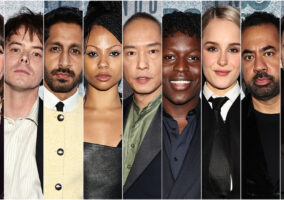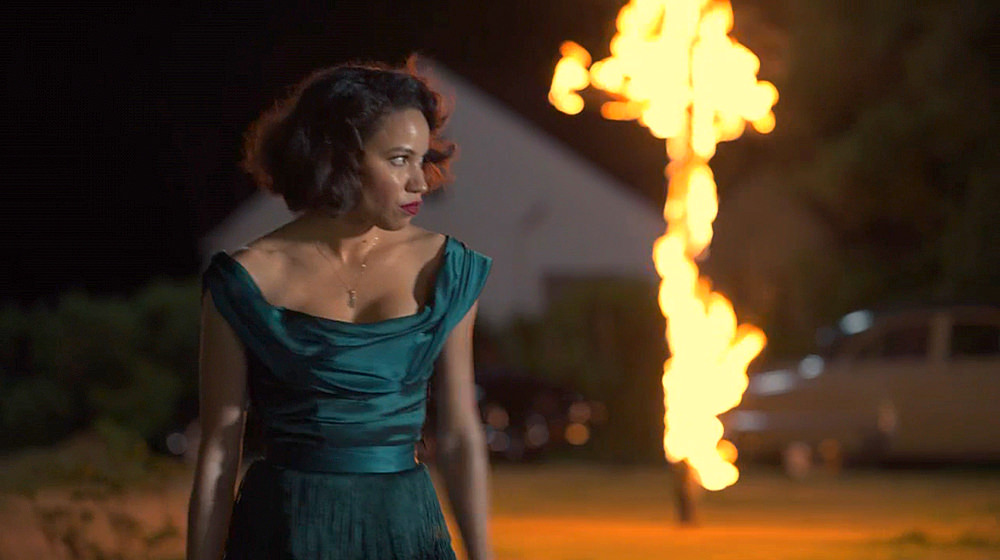
Last week’s episode with the Magical Klan didn’t really inspire us to devote any time to the costumes, but with this episode’s return to the parts of the show that make it special – the interweaving of Black American culture and history into supernatural horror – we felt compelled, possibly even duty-bound to shine a light on costume designer Dayna Pink’s singularly excellent work once again. We don’t think we’re doing too deep a dive on semiotics here (although we have a tendency to write that just before launching into a deep dive). We just think the way Pink uses fashion to recreate a time, a culture, a community and a family is worth looking at – especially because everyone just looks so good.
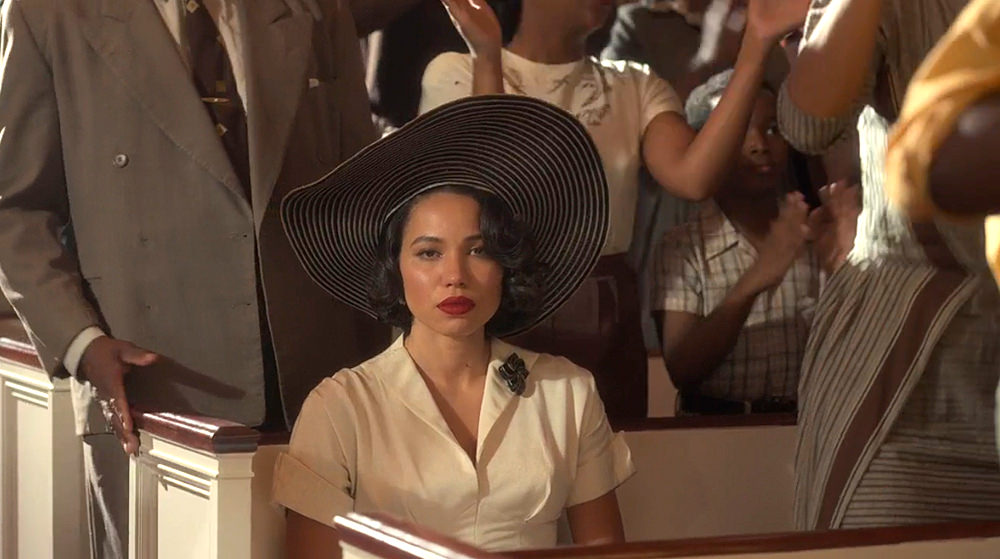

Right from the opening shot, you’re told that this is Leti’s story and the costume design throughout the episode works overtime to center her, define her, and play her off other characters. This is a gorgeous look that also re-affirms the motif that there is a costume line dividing the Leti who tries to do good by her family and community and the Leti who wants to cause good trouble, make art and raise hell. Church Leti vs. Party Leti, in other words.
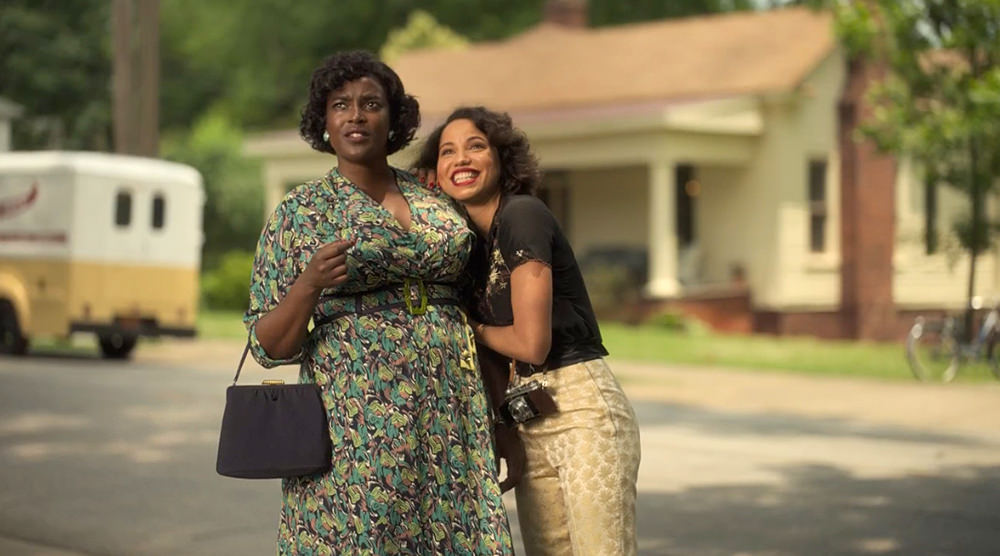

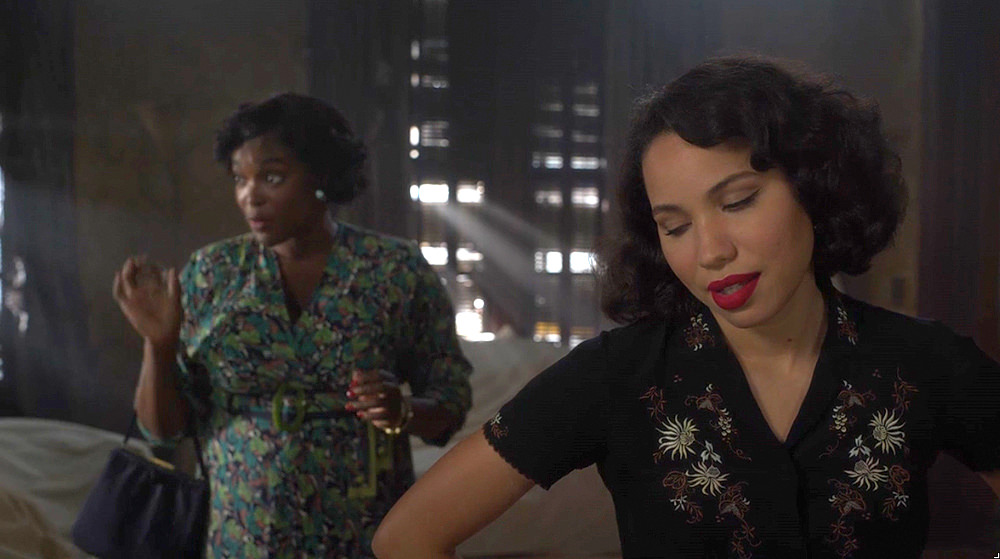
As is usually the case in her scenes with her sister Ruby, their costumes play off each other, underlining differences and similarities at the same time. The styles are vastly different. Ruby’s is a more conservative, mature style which might seem odd for a blues singer, but the dialogue tells us that Ruby’s been trying for years to get a job in a department store that won’t hire Black women. She derides Leti’s “artist friends” and is immediately opposed to the idea of pioneering their way into a white neighborhood, citing the Trumbull Park riots twice. Leti’s outfit is more modern, more Bohemian, possibly even more adventurous than Ruby’s. But they’re both in day ensembles that sport an unusual amount of black, with Ruby in an abstract botanical and Leti in a floral. Their differences define their relationship but there’s enough of a link there to show they have a relationship at all. You can see it in their clothes.
And speaking of conservative respectability masking something a little darker and more complicated…

Hippolyta looks flawless, even as it’s obvious that she’s screaming on the inside.
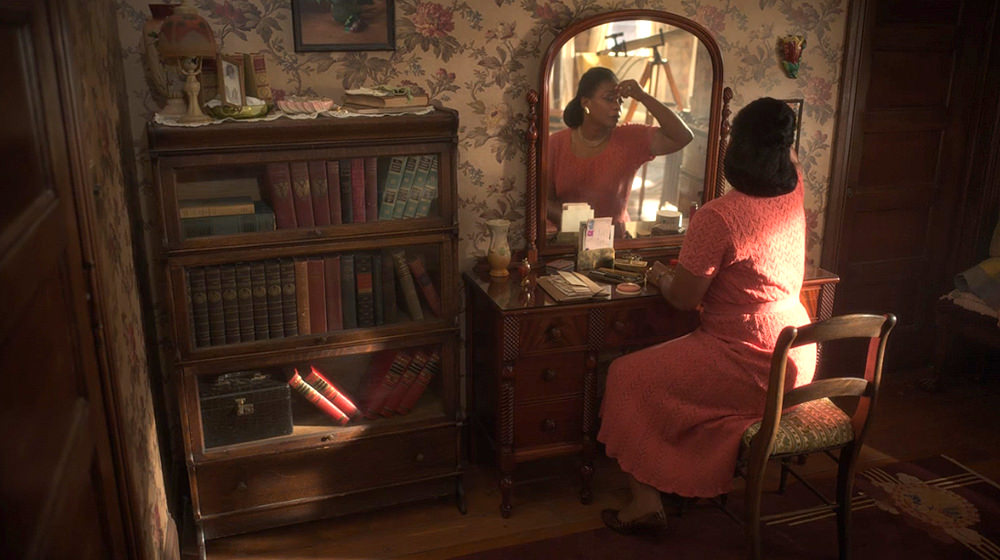


She will go out to the kitchen with her mask as firmly in place as she can keep it, but in front of her own mirror, as she’s putting the final touches on her flawlessly composed outside, her roiling insides can’t be fully hidden. The pearls, the earrings, the perfectly coiffed hair and the ladylike pink dress are telling you exactly one thing, summed up in one word: composure. She’s nothing but composure in this moment. It’s all she has to hold onto.
Back to Leti, in full red, white-and blue All-American Bohemian mode:




We just love this shot. Drink in every detail of their costumes. Notice how Leti and Ruby have more similarities than differences in their dress. She did, after all, agree to move in with all of Leti’s artist friends. And even if the dialogue never told you, we bet you could figure out who the dancer is based on the costumes.
But the real reason we’re doing another costume post for Lovecraft Country? The party scene, of course:




Every player is distinctively dressed and pops onscreen, they all feel like fully rounded people, and they all look like they would socialize with each other. It’s not easy to dress an entire scene of background players and check off all of those boxes without making anyone look generic. Note how much Ruby pops out in this crowd by virtue of her bold, bright red dress.
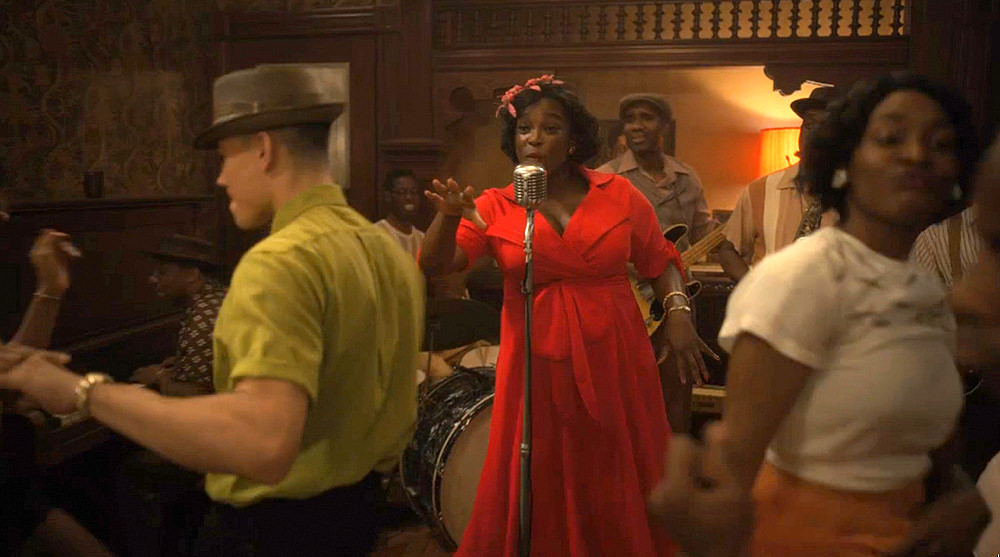

Even here, singing on “stage” in a bright red dress, she’s a bit more conservatively attired than the people she referred to as Leti’s “artist friends.” And MUCH more conservatively dressed than the hostess herself. But before we get to Leti’s showstopper of a look, attention has to be paid to the subtle ways costume design is telling the story of African-American history, sometimes in ways that aren’t obvious at first glance:


The boy who asks the Ouija board if he’ll have a good time on his upcoming trip is Emmett Till, who will travel to Mississippi to visit relatives and get beaten and killed by a bunch of racists. This is not mentioned in the dialogue. It’s told to us by the costume design; specifically the distinct striped tie worn by Till in several famous photographs taken by his mother. The reference completely passed us by. Credit must be paid to the many Black viewers and commenters who recognized it immediately and mentioned it on social media during the airing.
Okay, back to the scene-stealing hostess and her scene-spanning dress:

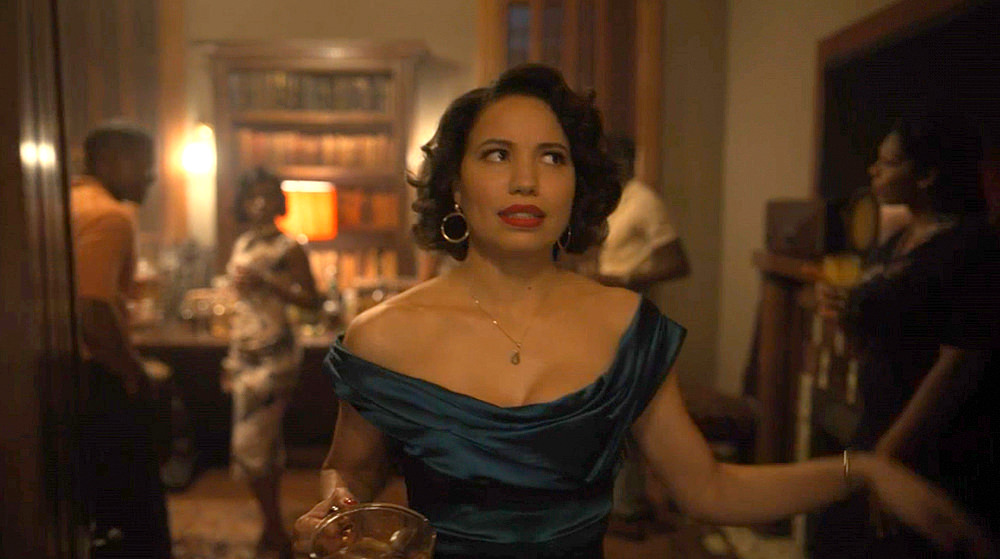
Miss Leti is single and ready to mingle, in a skirt that shimmys with every move she makes/every breath she takes, and a sweeping low neckline topping off a satin bodice that looks like an unmade bed. She’s serving sexy on a platter.

This is a costume that has to span several emotional changes and scenes. She wears it as the confident, flirtatious hostess, the woman giving into the fear of her sexual desires, the hellion with a baseball bat ready to do battle, and the prisoner getting a rough ride in the back of a police van.


It has to move when she moves, droop when she droops. Leave her feeling exposed when she’s feeling exposed and come off like armor when she’s righteously pissed off:




Like Beyonce’s iconic yellow dress in the “Hold Up” video from which this scene is clearly taking inspiration, Leti’s dress moves with every swing of the bat, turning the costume itself into a kinetic representation of her rage. This is the same dress she was flirting in, she lost her virginity in, she’ll be abused by a cop in later that night. It serves a TON of themes and it’s appropriately gorgeous and unforgettable in its design. Like the moon to Beyonce’s sun. This is not, however, the only costume that will see Leti through a range of scenes and emotional states.




In this top and pair of jeans – easily the least notable thing she wears in the whole episode – Leti realizes her house is haunted, more or less breaks up with her sister, dives into researching everything she can about the house, has a moment of honesty and vulnerability with Tic, hires a priestess, and exorcizes the demon from her house by calling on her ancestors. She wears this costume over two days of story time, which gives you some idea of how deep in the hole she is, but also gives the director and costume designer the opportunity to signal her deterioration and exhaustion by taking it out on her costume, hair and makeup. Unlike the fringed dress, which stays the same throughout her changes, this outfit shows the wear and tear of her trauma. It’s an unassuming look in a string of killer outfits, which they then go on to rough up even more. Not only does this highlight what she’s been through, but it also allows for her recovery to be just as assertively illustrated:
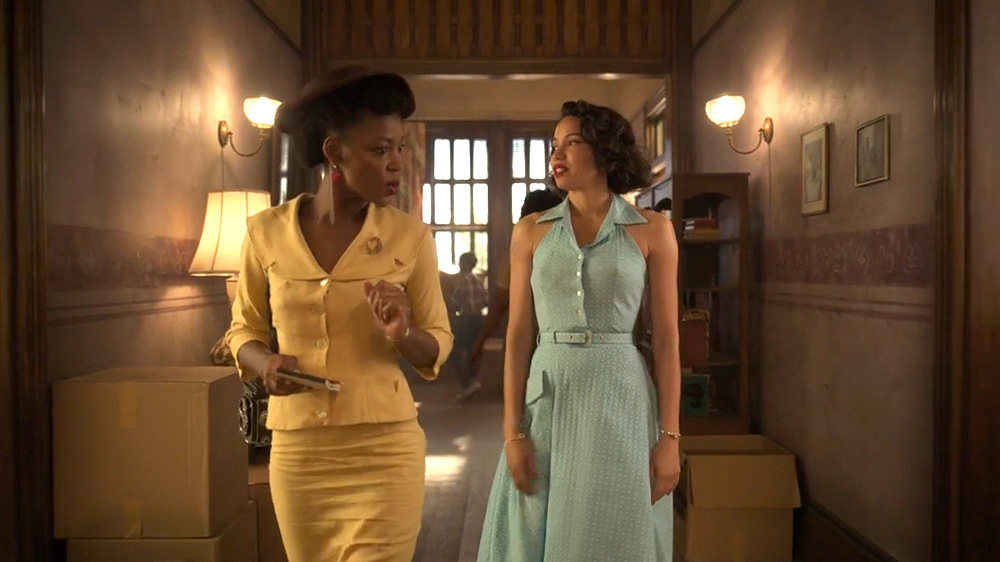



What better way to show she’s come out the other side than by closing out the episode in an absolute stunner of a dress? And speaking of a killer blue oufit…



White Power witch (but also possible ally…?) Christina Braithwhite is alive and still has access to her bank accountant going by her suit. In a show where so many Black characters are dressed so well and look so good, Christina’s costumes are distinguished by how expensive they look, for one. They’re also (no surprise here) conservative in tone, with the lacquered finish and aristocratic air of a Hitchcock blonde. She’s meant to look rich, confident, and the perfect aspirational figure (as it was defined at the time) in an unsettlingly perfect way. Betty Draper if she’d been a literal racist witch.
[Photo/Still Credit: HBO]
Venice Film Festival: Cate Blanchett in Esteban Cortázar at the Opening Ceremony Next Post:
Yea or Nay: Gucci Mid-heel Pump with Studs and Crystals
Please review our Community Guidelines before posting a comment. Thank you!

